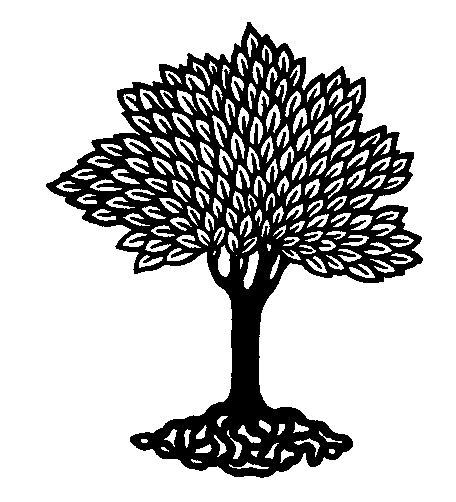
 |
Plant Taxonomy (BIOL308) - Stephen G. Saupe, Ph.D.; Biology Department, College of St. Benedict/St. John's University, Collegeville, MN 56321; ssaupe@csbsju.edu; http://www.employees.csbsju.edu/ssaupe/ |
TENTATIVE SYLLABUS - Fall '08
|
Cycle |
Date |
Lecture Topic & Key Question(s) |
Course Materials (including chapter/pages in Simpson) |
|
I |
Aug 27 (W) |
Introduction Course; Systematics, taxonomy & cladistics (What is a plant? What is systematics and why study it? ) |
|
| LAB | Plant Collecting - (How do you collect a plant?; Plant Collecting Techniques) |
|
|
|
29 (F) |
Unit 1. Basic Principles Vegetative terminology (How do taxonomists describe the features of roots, leaves and stems? ) |
|
|
|
Sep 2 (T) |
More veggie terms | ||
|
II |
4 (Th) |
Dichotomous & polyclave keys (How are plants identified?) |
|
| LAB | Field Trip - Common deciduous trees & shrubs of campus; PostLab Exercises |
|
|
|
8 (M) |
Nomenclature (How are plants named?) |
|
|
|
10 (W) |
The herbarium (What is a herbarium and why is it important?) |
|
|
|
III |
12 (F) |
Flowers (How do taxonomists describe the features of flowers?) |
|
| LAB | Field Trip - Woodland herbaceous plants |
|
|
| S/S | Optional: DNR Grassland Monitoring Field Weekend | ||
|
16 (T) |
Floral modifications & inflorescences (How do taxonomists describe various modifications from the 'basic' floral pattern and the features of inflorescences? ) |
|
|
|
18 (Th) |
Fruits & seeds (How do we describe the features of fruits and seeds?) |
|
|
|
IV |
22 (M) |
Embryology & palynology (How do taxonomists describe the basic features of angiosperm embryology and pollen?) |
|
| LAB | Field Trip - Plants of the prairie |
|
|
| 24 (W) | Heritage Day - no classes | ||
| Optional Field Trip: Quarry Park (Waite Park, MN) | |||
|
25 (Th) |
How to identify plants (How do we identify the plants in our collections?) |
|
|
| 29 (M) | Using Gleason & Cronquist (How do we use this resource to identify a plant?) | ||
|
V |
Oct 1 (W) |
EXAM #1 (Intro - plant ID) |
|
| LAB | Field Trip - Common plants of wet areas |
|
|
| 2-5 | Free Days | ||
| 7 (T) |
Unit 2. Systematics & Diversity
(What are the characteristics of common plant
families? How are flowering plants classified?) Overview of Flowering Plant Classification; Ancestral Families (Nymphaeaceae, Amborellaceae) |
|
|
| 9 (Th) | Magnoliids (Magnoliaceae) & Ceratophyllales (Ceratophyllaceae) |
|
|
|
VI |
13 (M) |
Monocot Families: "Liliaceae," Orchidaceae |
|
| LAB | Field Trip - Common Weeds |
|
|
15 (W) |
More monocot families: Iridaceae, Amaryllidaceae, Araceae |
|
|
| 17 (F) | Pollination video |
|
|
|
VII |
21 (T) |
Grasses, sedges, rushes & cattails |
|
| LAB | Field Trip - Conifers |
|
|
23 (Th) |
Basal Eudicots (Ranunculaceae, Papaveraceae incl. Fumariodeae, Berberidaceae) |
|
|
|
27 (M) |
Core Eudicots (Rosids) - Fabaceae (incl. 3 subfamilies), Rosaceae, Euphorbiaceae, Onagraceae |
|
|
|
VIII |
29 (W) |
EXAM #2 (Flowering plants – Onagraceae) |
|
| LAB | Plant Family Identification (basal eudicots & monocots) |
|
|
|
31 (F) |
Holiday Botany: Happy Halloween; Halloween botany (Cucurbitaceae, ergot, witches broom); Botanical costume contest - prizes for coming to class with a "plant theme" costume. |
|
|
|
Nov 4 (T) |
Core Eudicots (Rosids): Malvaceae, Brassicaceae, Salicaceae; Asterids -Asteraceae |
|
|
|
IX |
6 (Th) |
Core Eudicots (Asterids): Ericaceae, Primulaceae, Caprifoliaceae |
|
| LAB | Plant Family Identification (core eudicots) |
|
|
|
10 (M) |
Core Eudicots (Asterids): Boraginaceae, Hydrophyllaceae, Lamiaceae, Scrophulariaceae (sl); Verbenaceae |
|
|
|
12 (W) |
Core Eudicots (Asterids): Solanaceae, Apocynaceae (Asclepiadaceae), Apiaceae, Rubiaceae, Convolvulaceae |
|
|
|
X |
14 (F) |
Core Eudicots (Caryophyllids): Amaranthaceae, Caryophyllaceae, Polygonaceae, Cactaceae, Nyctaginaceae |
|
| LAB | Plant Family Identification (core eudicots) |
|
|
| 18 (T) |
Unit 3.
Classification. Traditional Classification; Linnaeus |
|
|
|
20 (Th) |
EXAM #3 (Halloween & core eudicots) |
|
|
|
XI |
24 (M) | Holiday Botany: The taxonomy of Thanksgiving & Natural & Mechanical Classifications |
|
| LAB | Plant Family Identification (grasses, sedges, rushes) |
|
|
| 26 - 30 | Thanksgiving Holiday | Due (before leaving campus): Plant Collection & Notebook | |
|
Dec 1 (M) |
Evolutionary Classification |
|
|
3 (W) |
Cladistics |
|
|
|
XII |
5 (F) |
More cladistics; PAUP |
|
| LAB | Winter Tree Identification | . | |
| 6 (Sat) | Optional Field Trip: Riverbluff Christmas Tree Farm & Brunch (11:00 a.m.) | . | |
|
9 (T) |
Gymnosperms |
|
|
|
11 (Th) |
Holiday Botany: The Taxonomy of Christmas (e.g., Mistletoe, poinsettia, mushrooms); Course Evaluations |
|
|
15 (M) |
Study Day | . | |
|
17 (W) |
EXAM #4 (6:00 - 8:00 pm) - Classification & Comprehensive component |
Additional Topics (to be covered in lecture if time permits. Other suggestions welcome):
|
| Top | Plant Tax. Home | SGS Home | Disclaimer | |
Last updated:
10/23/2008 / � Copyright by SG
Saupe